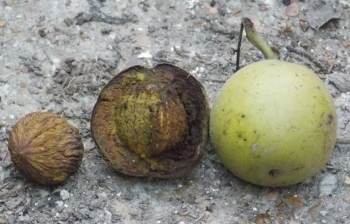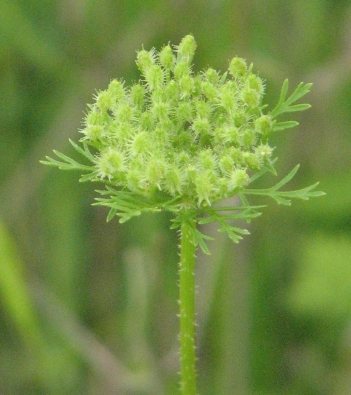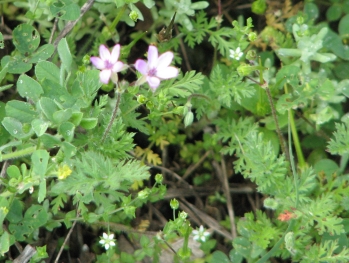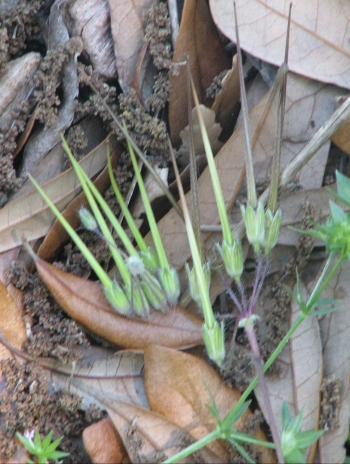Walnut; Eastern Black Walnut Juglans nigra L;. A large, low branching, slow growing, deciduous forest tree, with thick, deeply furrowed, black to dark grey, corky bark, Walnuts are more common in Eastern Forests where there is abundant rainfall. DFW is on the margins of Walnut habitat, a few specimens growing along the north facing slopes of water cut canyons along the MK Trace. The compound pinnate leaves, over a foot long, each have up to 17 slightly toothed, lance shaped leaflets, born in opposite pairs, with a final solo leaflet. Catkins are produced in April off the ends of last year’s stems, at the same time new leaves are budding. Catkins, which look like strings of warty knobs, convert into round, green nuts up to 2” in diameter, which turn black after they fall. Inside this fibrous husk (3/16” thick), lies a very hard, round, nut 1″ to 1½” in diameter, with deep convolutions, that can only be cracked open with a hammer (rock or iron). The flesh of the nut is lobed like an English Walnut, but is somewhat spicy, once commonly used to flavor ice-cream. Tiny maggots eat much of the pulp away from the seed as it rots on the forest floor. Black Walnut wood is dense, dark brown with nearly black grain, but often bored through by wood beetles. Texas black walnut (Juglans microcarpa), found west of DFW, has much smaller seeds, as the name micro– implies. (123-124) 4/18/15; 4/22/16; 3/28/17 – 4/10/17; 4/17/18; 4/20/19; 4/13/20 – 4/20/20;

Eastern Black Walnut habit; a large, readily branching canopy tree with a loose crown, long compound pinnate leaves, and dense, dark brown heart-wood with black veining, bearing very hard nuts encased in fibrous casques

Note; deeply furrowed, thick, black to dark grey, corky bark

Note; long compound pinnate leaves with odd numbers of leaflets, opposite pairs and a final lone tip leaflet, each lance shaped with a slightly serrated margin

Note; pendulant catkins that look like strings of warty knobs bud from the ends of last year’s twigs as new leaves are growing out

Note; large, round, green fruit which turn black after they fall, composed of a thick, fibrous rind surrounding a very hard, thick nut with spicy, white meat.

Note; the hard, convoluted nut embedded within an inedible, fibrous casque, green when it falls, turning black with age






































